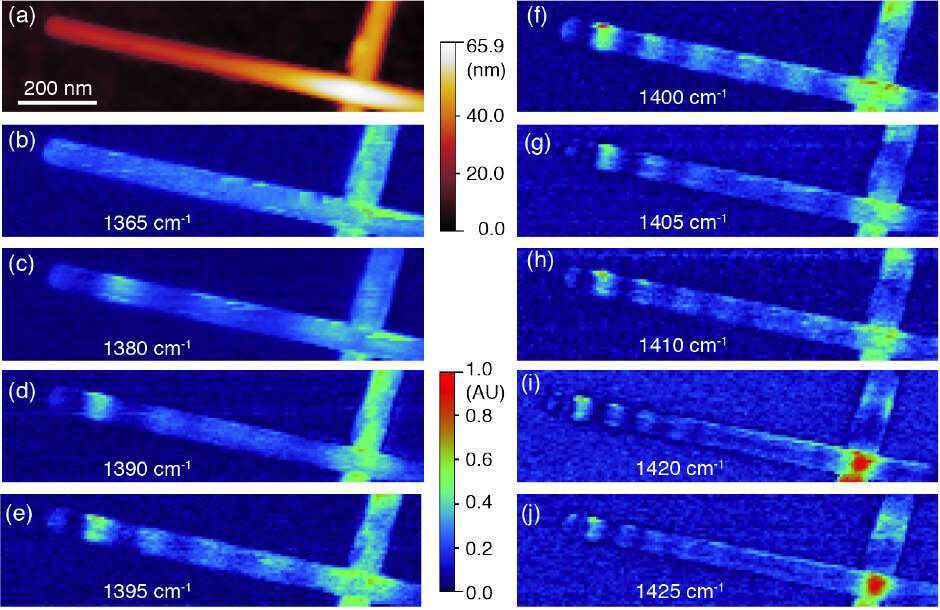
Revealing One-Dimensional Surface Phonon Polaritons in Boron Nitride Nanotubes by Phase Controlled Homodyne Infrared Near-Field Spectroscopy
Scattering type scanning near-field optical microscopy (s-SNOM) allows sub diffraction limit spatial resolution. Interferometric homodyne detection in s-SNOM can amplify the signal and extract vibrational responses based on sample absorption. A stable reference phase is required for high quality homodyne-detected near-field signal. We have developed a phase stabilization mechanism for s-SNOM witch stability is found to be better than 0.05 rad for the mid infrared light source1. Phase stabilization results in improved near field images and vibrational spectroscopies with a 10 nm spatial resolution. Using the improved s-SNOM we demonstrate the first example of propagating surface phonon polaritons (SPhPs) in a one-dimensional waveguide consisting of a boron-nitride nanotube (BNNT) and mid-IR light2. The observed SPhP exhibits high field confinement and enhancement. Hexagonal boron nitride (hBN) nanostructures are shown to sustain phonon–polariton modes with comparable performances to plasmon–polariton modes in graphene but with lower losses3. Near-field images show a standing wave pattern whose spatial frequency corresponds to an neff of up to as high as 70. We show the modal characteristics of the BNNT SPhP may be well controlled through the BNNT’s geometrical parameters, enabling mid-IR nanophotonic devices and applications.

1 Xiaoji G. Xu, Leonid Gilburd, and Gilbert C. Walker, “Phase Stabilized Homodyne of Infrared Scattering Type Scanning Near-field Optical Microscopy”, accepted by Appl. Phys. Lett.
2 Xiaoji G. Xu, Behnood G. Ghamsari, Leonid Gilburd, Gregory O. Andreev, Chunyi Zhi, Yoshio Bando, Dmitri Golberg, Pierre Berini, and Gilbert C. Walker, “One-dimensional Surface Phonon Polaritons in Boron Nitride Nanotubes”, Nature Comm., 2014, 5, 4782.
3 Zubin Jacob, “Hyperbolic phonon–polaritons”, Nature Materials, Vol 13, Dec 2014.
leonid.gilburd@gmail.com
Powered by Eventact EMS